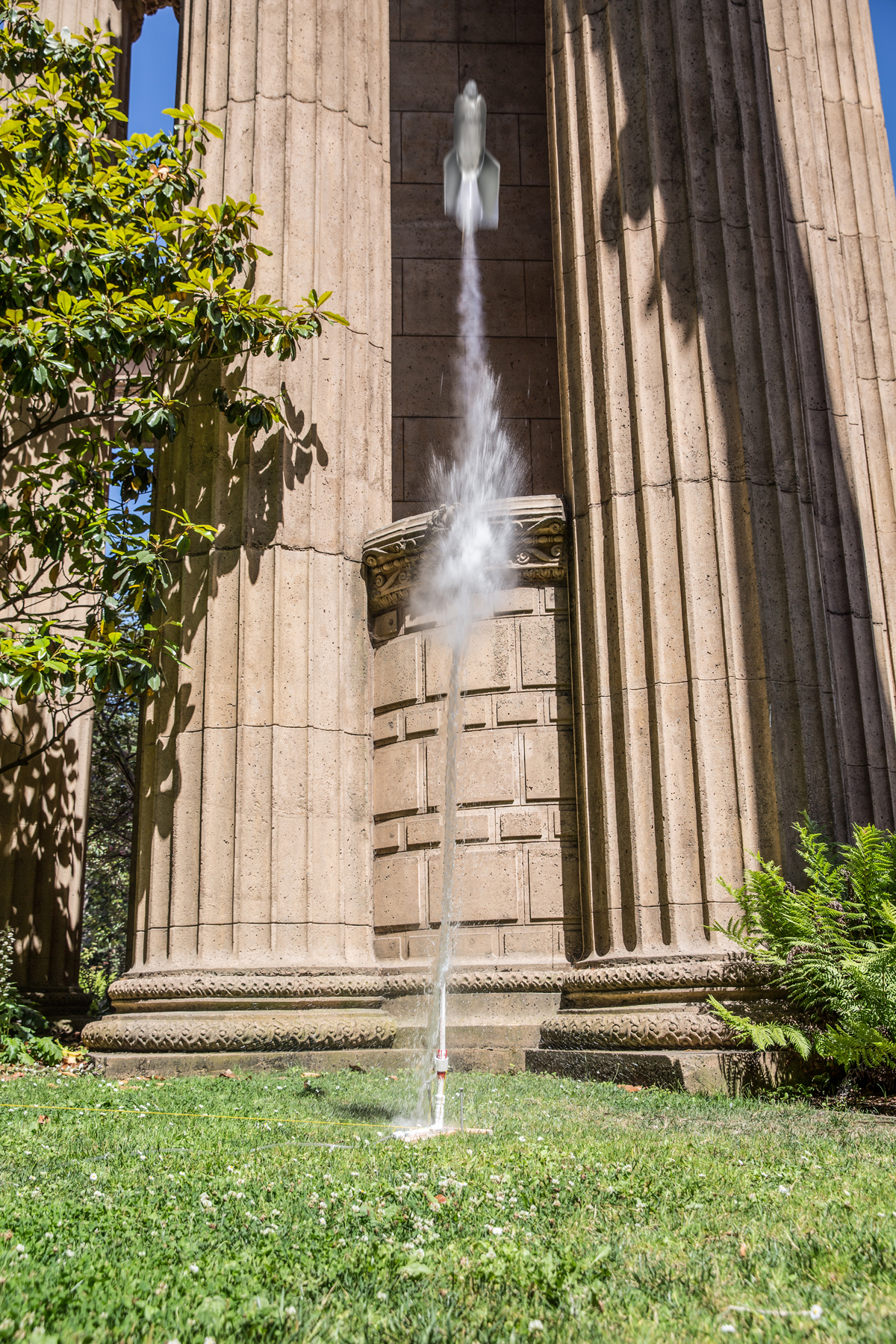

Water rockets have been around a long time, but really got popular when soda manufacturers started packaging soda in 2-liter bottles back in the mid-’70s. Since they were considerate enough to give away free rocket bodies with every soft drink purchase, many of us started building rocket launchers to fly these new rockets.
Water rocket launchers are fun and easy to build if you have a few household tools, but there are some tricks that are not obvious at first. You’re going to hold a rocket on a pad while it is under as much as 75 psi of pressure. That’s not easy to do. This one uses high pressure O-rings and a zip-tie mechanism to securely hold the rocket in place until launch time.

Most people think water rockets are safe, simply because they don’t use flammable materials. They can be—but only if you pay attention to some safety issues. Briefly, it isn’t safe to be close to PVC pipe under pressure from air. It’s also not safe to be near the rocket itself. There have been at least two cases where people broke their hand with a water rocket when it launched unexpectedly and smashed into their hand. Thank goodness they weren’t leaning over the rocket with their head or body at the time! This launcher has a mechanism for releasing the pressure remotely, so you never, ever have to approach the pressurized rocket.
This article shows you how to build the launcher from scratch using parts you buy at your local hardware store. There is also a kit, available from Maker Shed, that has all of the parts needed to build the launcher. You can skip the initial steps of cutting and drilling parts if you get the kit, since all of the parts are precut and drilled.
Water rockets can be dangerous. Never approach a pressurized rocket. The rocket is heavy when it lifts off, carrying over 1 pound of water, and it hits bone-breaking speeds of around 100mph in a fraction of a second. You can find the National Association of Rocketry’s Water Rocket safety guidelines at waterrocketmanual. com/safety_code.htm or see Step 22 for more safety guidelines.
You can find out more about rocketry in general, and water rockets in particular, in Make: Rockets, Down to Earth Rocket Science. This launcher design first appeared there.




